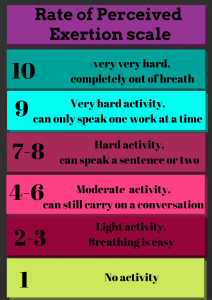It is almost March 1st. Unfortunately March is where many New Year’s resolutions go to die. The dreaded fitness plateau leads many to just give up. The good news is there are tweaks you can make to keep that body responding and moving forward to the results you want. One of the main problems is that a couple of months into a new routine is the point where many people hit the fitness plateau. They began a great fitness routine on January 1, plucked away at it diligently for 3-4 weeks, then dabbled in it for another couple of weeks and then changes began to drop off along with their motivation.
Today I am going to teach you how to tweak that workout to light the fire again! The body adapts fairly quickly so it is important to keep things changing so that it has to adapt and get more fit as it accommodates these new adjustments. These changes can be made to both the resistance and cardiovascular training aspects of your program. For more tips on how to adjust other areas of fitness and nutrition to help you avoid a weight loss plateau read THIS article
This is how: FITT …This is our map for change so let’s get road trippin’.
Frequency of exercise sessions
This refers to how often you are doing an activity. This can mean how many times per week or even per day. Now, while I don’t want to encourage you to run your body into the ground, sometimes adding another bout of movement in the day can do a lot to boost metabolism. This is a fine balance between giving the body just enough stress for it to adapt to and allowing enough time for recovery from that stress. Examples of increasing frequency would be:
- Adding another day to your workout schedule as in going from 3-4 days per week. Make sure that you give yourself at least one recovery day per week where you do very light activity such as walking or stretching. You can also
- Adding another bout of activity to your day such as getting in your strength training workout in the morning and adding a walk or light cardio session in the evening. Note that you can easily get away with walking every evening but if you are considering adding some form of cardio session to your day you don’t want to do this every day of the week. Be careful to allow enough recovery and only add something like this in every few days.
When it comes to frequency be careful not to get stuck in the mindset trap of “If a little is good, then more is better” It is easy to over do it on this one. Listen to your body and do not try to pound out two intense workouts in one day and then hit the gym early the net morning. This can actually freak your body out and cause a fitness plateau. Listen to your body and think of this extra frequency as giving the body a subtle boost
Intensity of your workouts
The intensity of a workout is a variable you should always be looking into to continue making forward progress. Intensity refers to the amount of effort you are exerting in your activity. If your workout becomes easy and you could do it all day, it will be good from the “movement” aspect of things but it probably isn’t enough to get you the results you want to break through the stagnation you are experiencing. To ramp up the intensity you can:
- Increase the amount of weight you are lifting
- Increase the speed, incline or resistance on the cardio machine you are using
- Incorporate HIIT intervals (I wrote and article on the very effective HIIT intervals for you HERE)
Here is a tool I use in the gym with my clients to help them know if they are working out at the right level:
Duration (or time) of your workouts
 The duration of time that you engage in your workout can also be adjusted to create a little more work that the body has to adapt to. Again, it is important to not get caught up in the “more is better” mentality with this factor. For example, if you have been jogging for 15 minutes every day, try increasing your duration by 5 minutes per week up to 45-60 minutes. If you have just started incorporating HIIT intervals and are doing 10 round of :30 work followed by :30 of rest, consider adding 2 more rounds each week.
The duration of time that you engage in your workout can also be adjusted to create a little more work that the body has to adapt to. Again, it is important to not get caught up in the “more is better” mentality with this factor. For example, if you have been jogging for 15 minutes every day, try increasing your duration by 5 minutes per week up to 45-60 minutes. If you have just started incorporating HIIT intervals and are doing 10 round of :30 work followed by :30 of rest, consider adding 2 more rounds each week.
Type of exercise
One more change you can make it the type of exercise you are doing.
- Switch form the strength training circuit machines in your gym to using dumbbells

- Get off the elliptical and onto the rowing machine
- Try new movements like pushing, pulling, throwing, crawling and twisting.
- Join a kettlebell class
- Hire a personal trainer to show you some new moves
- Move on from using only body weight exercise to incorporating exercise bands.
- Add in awkward movements that cause your body to shift balance. I love Sandbag training for this
The most important thing to remember is to listen to your body and be sure to properly fuel this extra activity. Don’t fall into the “eat less, exercise more” trap and throw your body into a state of metabolic distress.
Remember, you can’t out train a bad diet (read the article HERE) so if you are ramping up and changing your workouts but still eating a diet of processed foods, starches and sugars you will most likely not get the results you want.


